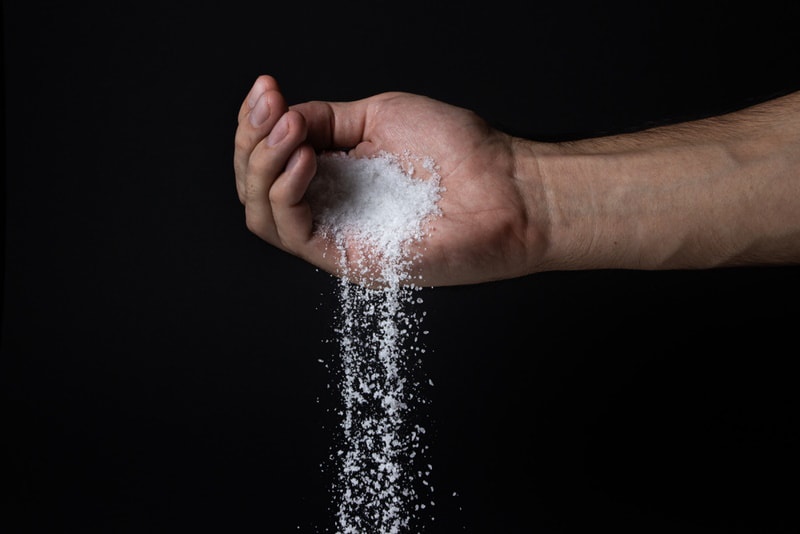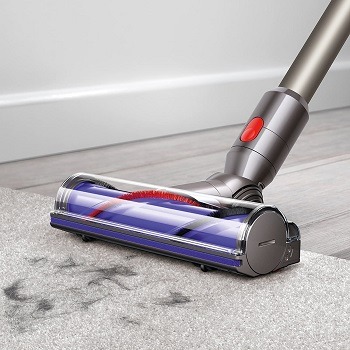Does Salt Kill Fleas? Safety & Effectiveness Revealed
By Lorre Luther
Updated on

If you’re looking for a natural way to kill fleas in your home, you may have heard that salt does the trick. Salt in high concentrations may kill fleas but is not the safest or most effective solution. Because salt doesn’t appear to destroy flea eggs,can only be used on home surfaces and can be harmful or even toxic to pets-it’s not an effective or recommended treatment option for a flea infestation.
How Is Salt Used to Kill Fleas?
Salt is usually applied directly to carpets and upholstery to kill fleas. Start by vacuuming your home thoroughly. Make sure to properly dispose of whatever you’ve vacuumed up by emptying everything into a bag, sealing it, and immediately taking it outside to the garbage can prevent flea eggs from staying behind and hatching.
Sprinkle salt over your carpets and use a brush to work it in. Allow the salt to sit overnight, and then give the area another good vacuuming. The longer the salt has to sink in, the better the results.You may need to repeat the process a few times to see any results.It is of course not treating adult fleas living on your pets. Fleas are prolific egg layers and so the cycle will continue.

But … Salt Can Be Harmful to Dogs and Cats
Leaving large quantities of salt in areas accessible to your pet isn’t a great idea, as salt, when consumed in high quantities, can be toxic to pets.1 Common signs of salt toxicity include vomiting, diarrhea, lethargy, and seizures in cats and dogs. The precise amount pets must consume to run into problems depends on several factors, including age, weight, and underlying conditions. Since salt can be toxic to pets, other flea control options make much safer choices.
Natural Ways to Treat Fleas on Your Pet
Preventing your dog or cat from coming into contact with fleas is often easier than dealing with the consequences of an infestation. Indoor cats are far less likely to encounter fleas than pets with unsupervised outdoor access. Dogs kept on leashes, avoiding contact with wild or stray animals and walking in areas relatively free of vegetation, often have fewer issues with fleas. These are not practical solutions for many pets though.

Using a Flea Comb and Bathing
Regularly going over your pet’s coat with a fine-toothed makes you aware of any fleas that need to be dealt with. It’s also a natural way to remove fleas and flea eggs from your pet’s fur. Bathing pets can also help get rid of any remaining fleas. Use a dog or cat-friendly anti-flea shampoo to prevent skin irritation and encourage proper hydration while safely getting rid of the fleas.
Because natural methods are often less effective than commercial treatments, you’ll likely need to repeat the process a few times for maximum effectiveness. These methods may not be the best choices for pets who become stressed when bathed or brushed.
Preventative Medications
There are many oral and topical medications that can quickly and effectively kill and prevent fleas in cats and dogs.Always speak to your vet for guidance on the best options for your pet and follow product instructions carefully. Commercial flea-and-tick products for dogs should never be used on cats as many contain permethrin, which is toxic to cats.

Natural Ways to Deal With Fleas in the Environment
Getting rid of fleas often requires a multi-pronged approach that includes treating your pet and its environment. While treating your pet, you’ll also need to get rid of fleas lurking in your home. Start by vacuuming your house. Pay extra attention to areas where pet hair accumulates, such as behind sofa cushions, along floorboards, and corners. Vacuum any furniture your pet particularly enjoys lounging on and your buddy’s bedding.
Give your pet’s bedding a thorough wash in the machine. Launder the bed cover at the highest possible temperature permitted by the manufacturer’s instructions. Drying laundry at relatively high temperatures may also help kill fleas. Wash your bedding as well, including pillows and comforters, to ensure you’ve gotten rid of any lurking fleas. However, addressing a flea infestation usually requires a household insecticide and sometimes professional expertise from a pest control company.
Conclusion
Salt, in high enough concentrations may kill fleas, but it can be toxic to pets and is unlikely to control a flea infestation. Due to a flea’s life cycle, dealing with a flea infestation is an involved process which can take several months and it is best to work with your vet to get on top of it. Taking steps to avoid an infestation in the future is easier than addressing the situation after your buddy starts biting and scratching.
See also: Does Pine-Sol Kill Fleas? Vet-Approved Facts & Safety
Featured Image Credit: Nerza Shutterstock












